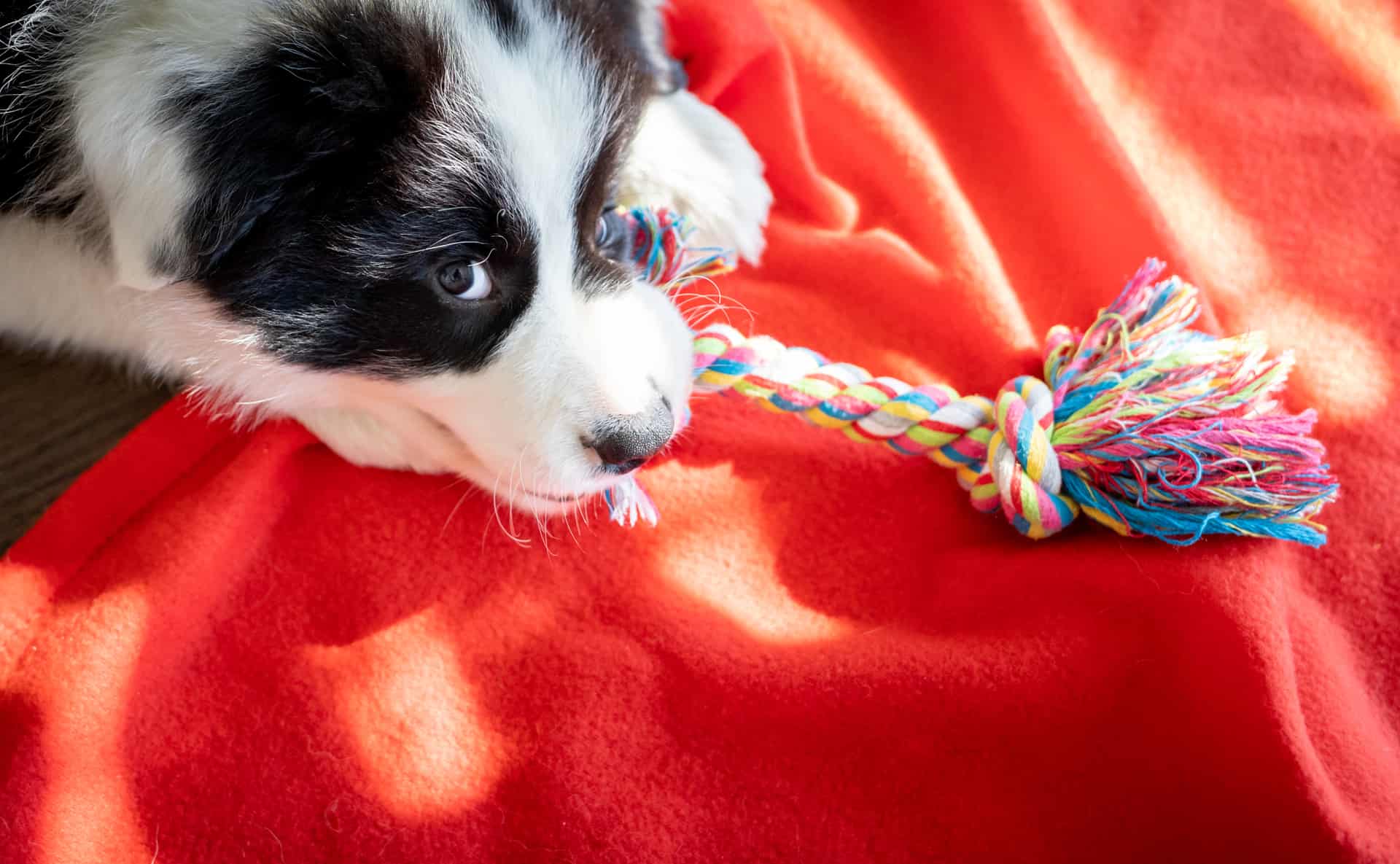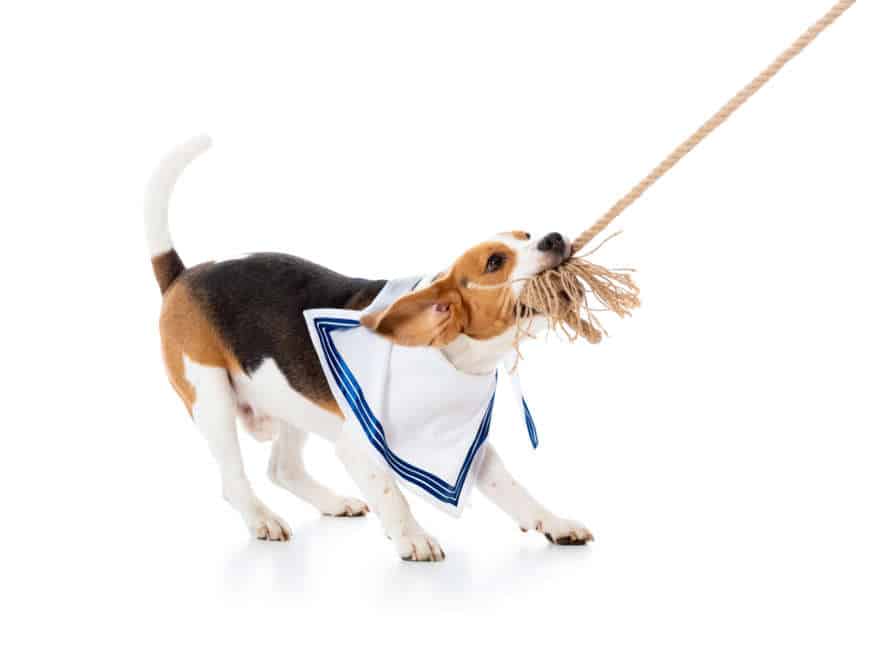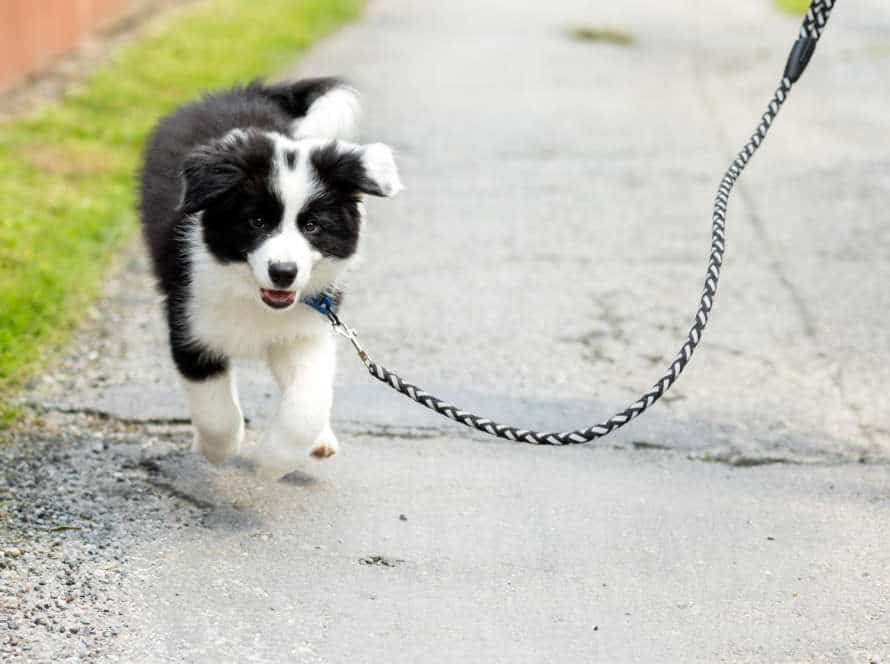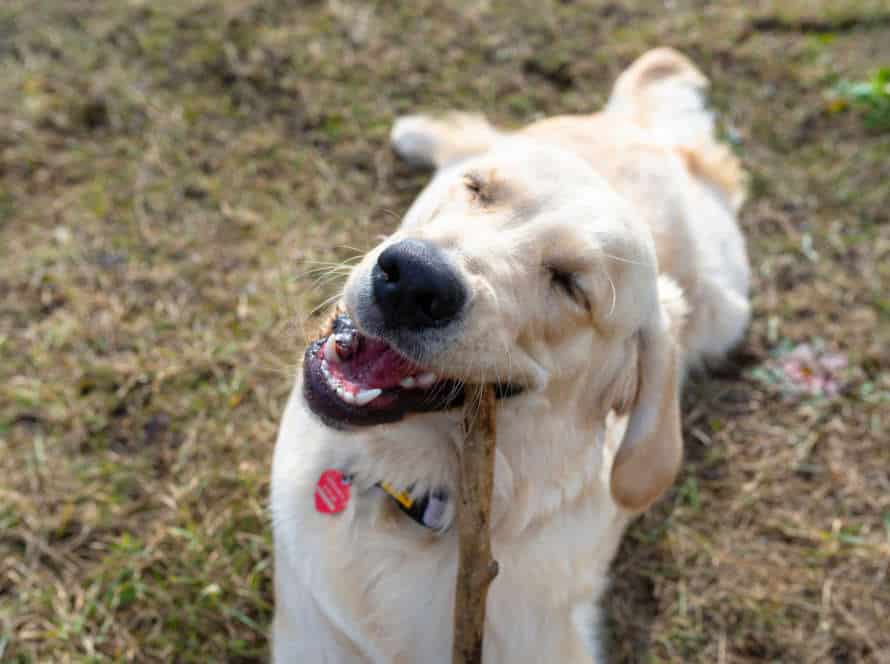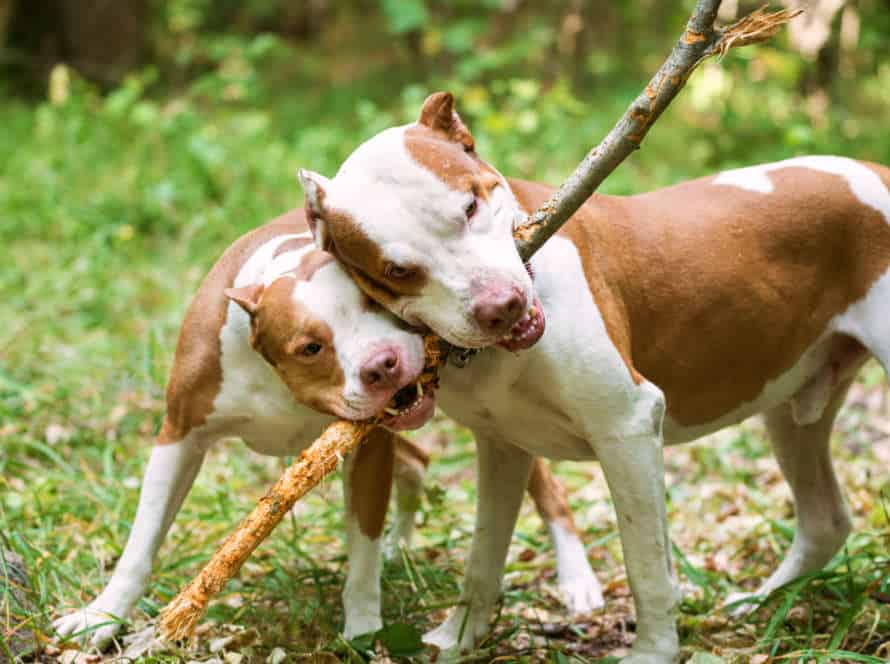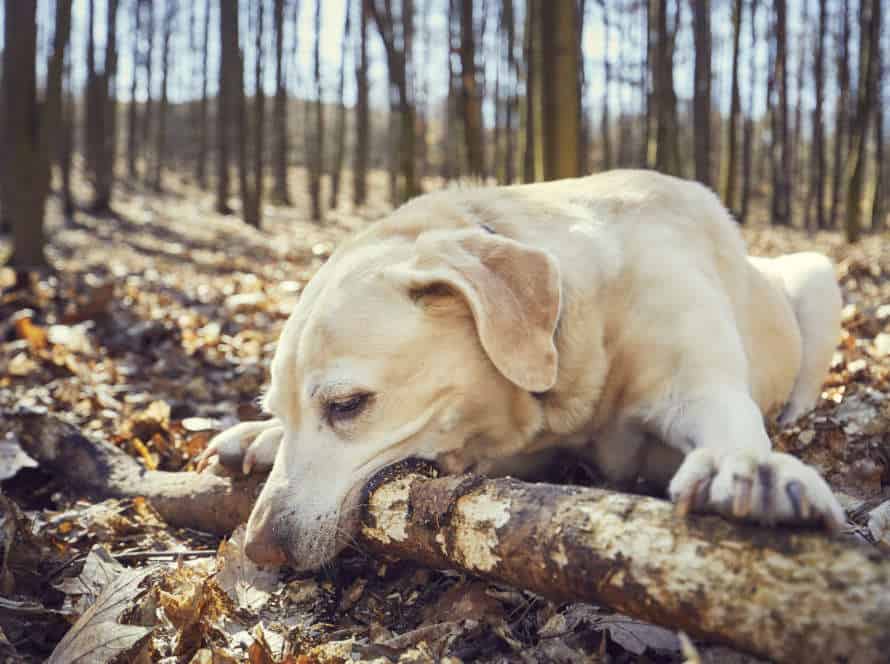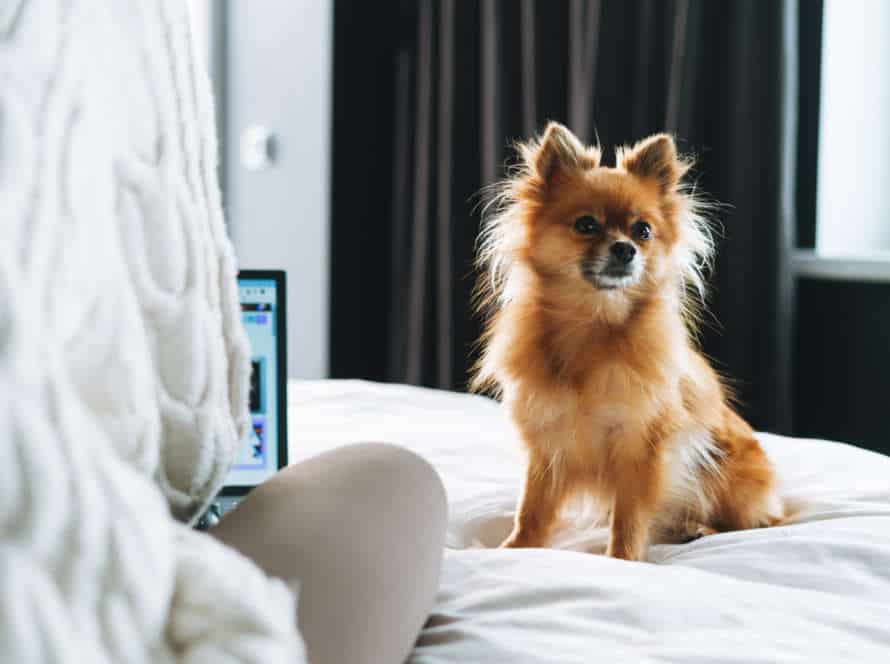Puppy Biting vs. Aggression: How to Tell the Difference
Puppy biting and aggression may look the same at first. But, there are key differences pet owners need to know.
Puppy biting is a regular behavior as pups start teething and exploring. It usually doesn’t come with growling or snarling.
Aggression in puppies is more serious. It usually includes growling, snarling and bared teeth. It could be a sign of anxiety, protection or other issues.
It’s important to know if it’s puppy biting or aggression before taking action. This will help train and stop bad behavior in the future.
Understanding Puppy Biting
Puppy biting is common. Why? When? Let’s figure it out! Puppy teeth are sharp. Biting can be scary, especially if you think it’s aggression. Let’s learn the difference between puppy biting and aggression. How to identify them? That’s the question.
Reasons Why Puppies Bite
Puppy biting is a common thing. Knowing why they do it can help you understand if it’s normal or aggression. Here are the reasons:
- Teething: Chewing helps puppies with sore gums.
- Exploration: Puppies use their mouths to investigate.
- Play: Biting is part of playtime for puppies.
- Seeking Attention: Puppies may nip to get your attention or show love.
- Fear/Anxiety: Biting is a defense mechanism when scared or anxious.
It’s vital to teach puppies that biting isn’t okay. Knowing why they bite means you can address it properly, and help them learn to communicate without nipping.
Pro tip: Give puppies chew toys to soothe their gums and stop them from biting people or objects that aren’t for chewing.
What Normal Puppy Biting Looks Like
Being a new pup parent is a big responsibility. It’s important to recognize that puppy biting is a natural behaviour. But, it’s essential to discern between normal puppy biting and aggressive behaviour, to stop any harm from occurring.
Normal puppy biting includes play, exploration and teething, and they typically bite softly and not aggressively. You can also give them clear instructions and divert their biting activity.
Aggressive biting however, usually has accompanying growling, snarling and lunging. Puppies could even refuse to let go when told to. This type of biting may be caused by fear, anxiety or territorialism, and needs professional assistance to fix.
Understanding the difference between the two types of biting is important for both the puppy and owner’s safety and well-being.
How to Stop a Puppy from Biting
Puppy biting is a normal thing for puppies and is a part of their growth. But, if it’s not managed rightly, it can become a problem. It’s vital to comprehend the contrast between puppy biting and aggression to handle the issue well.
Puppy biting is often gentle and fun, and comes with a wagging tail. Whereas, aggression is harsh, hostile and has growling or snarling. Here are some tips to stop your pup from biting:
- Direct their biting behaviour by giving them chew toys.
- Use positive reinforcement training to show your pup that biting is not okay.
- Have consistent commands like “No” or “Stop” for communicating with your pup.
- Do not use physical punishment as it may lead to fear and aggression.
- If you detect any signs of aggression, get help from a professional quickly.
Signs of Aggressive Behavior in Puppies
An aggressive pup could mean a bigger issue, like fear or insecurity. Look for signs such as snarling, growling, or biting. Knowing the difference between puppy biting and aggression needs knowledge of canine behavior. This article will show you how to recognize aggression and what to do.
Aggression Triggers in Puppies
Aggressive behavior in puppies can have various triggers. Knowing them can help you stop and manage it. Here are some usual causes of aggression in pups:
- Fear and anxiety: If a pup finds itself in a new or strange situation, it may show aggression due to fear or anxiety.
- Resource guarding: They may get possessive over food, toys, or space, causing aggression.
- Lack of socialization: Pups that haven’t been exposed to other dogs and people may become fearful and aggressive in social settings.
- Pain or illness: Pups may act aggressively if they’re hurting or unwell.
- Territorial behavior: They may protect their home and family, leading to aggression towards strangers.
It’s important to tell the difference between puppy biting – which is normal – and real aggressive behavior. Signs of aggression are growling, snarling, lunging, and biting without warning. If you see these signs, contact a professional dog trainer or behaviorist.
Types of Aggressive Behaviors in Puppies
Puppies can display aggression, similar to humans. Fear-based aggression is the most prevalent. This occurs when the puppy senses a threat. Territorial aggression is when it senses an invader. Protective aggression is when it feels it must watch over its owners and others. Possessive aggression is when it guards its possessions. Social aggression is when it vies for resources or dominance.
Puppy biting differs as it has no aggressive intent. Knowing the distinction is critical for puppy owners.
Pro Tip: Socializing and teaching your pup is key to avoiding and fixing aggressive behavior.
How to Deal with Aggressive Behavior in Puppies
Many pet owners face aggressive behavior in puppies. It’s not normal puppy play-biting. Signs include growling, snarling, lunging, and biting. Puppies act this way when scared, nervous, or feeling threatened. Here are tips to help:
- Socialize your pup with different people, places, and situations.
- Use treats and praise for good behavior and discourage the aggressive kind.
- Teach basic commands like sit, stay, and come.
- If your pup still acts aggressively, get professional help.
Identifying the Differences
Telling the difference between puppy biting and aggressive behavior can be tricky. Puppy biting is normally a sign of learning. They’re still getting the hang of social skills. Aggression, however, is more serious. It’s important to find the root cause of the behavior to address it. This article covers how to tell the difference between puppy biting and aggression.
The Nature of Puppy Biting
Puppy biting is a normal behavior. It helps pups learn about their surroundings. But, distinguishing between ordinary puppy biting and aggression is essential. This way, people and animals don’t get injured.
Differences between puppy biting and aggression:
- Bite force: Puppy biting is usually gentle, while aggression comes with hard bites that hurt.
- Body language: Puppies may growl, bare their teeth, and wag tails when they bite. But, their body language usually signals playfulness. Aggressive dogs show stiff body language, fur standing up, and dilated pupils. That usually means they’re ready to attack or defend.
- Triggers: Puppies may bite due to playing, excitement, or curiosity. Aggression is usually caused by fear, stress, or danger.
- Context: Puppy biting is common during puppyhood. With consistency and rewards, it can be trained out. Aggression is harder to get rid of. It needs professional help.
The Nature of Aggressive Behavior
It’s important for pet owners to know the difference between ‘normal puppy biting‘ and ‘actual aggression‘. Puppy biting is common when they play, explore or teethe. It helps them learn to control the force of their bite. Aggression, on the other hand, is to cause harm. It includes growling, biting, snarling, and snapping.
Here are some key differences:
- Puppy biting is usually gentle and doesn’t cause injury. Whereas, aggressive biting can be violent and cause harm.
- Puppies will stop biting when told. But, aggressive dogs may continue attacking.
- Aggressive behavior is usually due to fear, territory or anxiety. Whereas, puppy biting is usually for fun or exploration.
If your dog is displaying aggression, seek help from a trainer or behaviorist. This will ensure the safety of your pet and those around.
Strategies to Distinguish Between the Two
Puppy biting and aggression can be tricky to tell apart. But there are some key tips to help you:
- Look at the context. If your puppy is biting while playing or exploring, it’s likely just playful behavior. If they’re growling or biting when you take away a toy or something they’re eating, that could be aggression.
- Check the intensity and length of the behavior. Playful biting is usually short and gentle. Aggressive biting is usually more intense and longer.
- Look for other signs of aggression, like raised hackles, stiff posture and a fixed gaze.
- Not sure? Get help from a professional dog trainer or behaviorist.
- Pro Tip: Training your puppy to have bite inhibition prevents problems and encourages healthy play.
Managing Puppy Biting and Aggression
Puppy biting is often mistaken for aggression. It’s crucial to tell the difference – to fix the problem correctly. Puppy biting can be handled with techniques while aggression needs more intense training. In this article, we’ll contrast puppy biting and aggression and explain how to manage them.
Train your Puppy Consistently
Training your pup regularly is key for controlling their biting and aggressive behavior. But it’s important to know the difference between puppy biting and aggression to handle the situation correctly.
Puppy biting is a normal thing during teething; but aggression is more serious and needs immediate attention. To tell the two apart and train your pup steadily, here are some tips:
For puppy biting:
- Give them plenty of chew toys to satisfy their teething needs.
- Guide their biting behavior toward the chew toys, not your hands or feet.
For aggression:
- Look for signs like growling, snarling, or intense staring.
- Get help from a professional trainer or behaviorist to find the root cause of the aggression.
Be patient and consistent in your training to stop your pup’s biting and encourage good behavior. Pro tip: Treat and praise your pup when they do something good.
Use Positive Reinforcement Techniques
Positive reinforcement is great for managing puppy biting and aggression. But, it’s important to know the difference between the two. Biting is a natural behavior for puppies. It’s their way of discovering the world. Aggression is more serious. Its purpose is to harm or scare.
Here are some positive reinforcement techniques for managing puppy biting:
- Substitute Your Hand: When your puppy starts to bite you, switch your hand with a chew toy.
- Reward Good Behavior: Offer treats or praise when your puppy plays nicely, without biting.
- Time-outs: If your puppy still bites, put them in a time-out area for a few minutes. This teaches them biting isn’t okay.
Positive reinforcement works best if you use it consistently and with behavioral training.
Consult with a Veterinarian or Professional Trainer
If you’re having trouble managing your pup’s biting and aggression, it’s important to speak to a vet or professional trainer. They can work out the root cause and the best plan to handle it.
Bite inhibition is key for puppy training. Know when your pup’s biting is just part of their development, or if it’s a sign of aggression needing intervention.
Puppy Biting:
Normal biting is part of a pup’s play and exploration. It’s not linked with growling, snarling, or aggressive signs. Teach them to reduce their bite strength and play without hurting humans or other animals.
Aggression:
Growling, snarling, biting, and causing harm to humans or animals are signs of aggression. It’s vital to address this soon before it leads to injuries or serious consequences.
Get a vet or professional trainer to create a comprehensive training plan to tackle your pup’s biting and aggression.
Remember: Patience and consistency are key, and positive reinforcement works better than physical punishment.
Conclusion: Addressing Puppy Biting and Aggression Proactively
To wrap up, it is essential to be proactive with puppy biting and aggression. It is important to distinguish between puppy biting and aggression; biting is a common behavior among young dogs and usually happens during playtime. Redirecting their attention to a toy or providing exercise can help. On the other hand, aggression is severe and needs to be addressed right away. Signs of aggression may include growling, lunging, and biting, and can be caused by fear or protection of territory. In this case, look for professional help from a qualified dog trainer or behaviorist to handle it safely and properly.
Remember: Staying consistent and using positive reinforcement are essential to managing puppy behavior. With patience and the right strategies, you can assist your furry friend to become a well-behaved and loving companion.
Frequently Asked Questions
Q: Is it normal for puppies to bite?
A: Yes, it is completely normal for puppies to bite. They use their mouth to explore their environment and learn social skills.
Q: How can I tell if my puppy’s biting is just playfulness?
A: Playful biting often involves wagging tails, relaxed body language, and gentle mouthing. Puppies may also give play bows or initiate play with toys.
Q: When does biting become aggression?
A: Biting becomes aggression when a puppy shows intense biting behavior, such as snarling, growling, or biting hard enough to cause injury. This behavior is often triggered by fear, protection, or stress.
Q: What can I do to stop my puppy’s biting?
A: It is important to redirect your puppy’s biting behavior onto appropriate toys or chew objects. You can also use positive reinforcement training techniques to teach your puppy appropriate behavior.
Q: What if my puppy continues to show aggressive behavior?
A: If your puppy’s aggression persists or becomes worse, it is important to seek professional help from a veterinarian or certified animal behaviorist.

